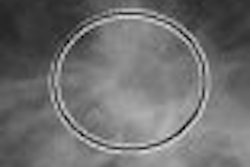Earlier this month, the American College of Radiology (ACR) and the Society of Breast Imaging (SBI) withdrew from the National Accreditation Program for Breast Centers (NAPBC). The move effectively ended a two-year collaboration with the NAPBC -- a surgeon-initiated group -- designed to establish guidelines for breast disease treatment from a multidisciplinary perspective.
The ACR and SBI, both based in Reston, VA, were unable to reach agreement with the NAPBC over the incorporation of the ACR's standards and practice guidelines for ultrasound breast imaging and ultrasound-guided interventions, although the parties had agreed on the performance of several other aspects of breast care.
These two points of controversy could not be overcome, at least from the viewpoint of the ACR, according to Dr. Carol Lee, professor of diagnostic radiology at Yale University in New Haven, CT, and chair of the ACR Breast Imaging Commission.
"As breast imagers, we felt there were no criteria for quality built into the proposed program," Lee said. "We were told the criteria would be developed as data were collected, but it seemed to us like putting the cart before the horse."
A consortium of 14 national, professional organizations, the NAPBC was initiated in 2005 by the Chicago-based American College of Surgeons (ACS). The consortium is in its pilot phase with 10 sites identified for survey, and has more than 100 centers interested in becoming NAPBC-accredited programs.
The organization's goal is to improve the quality of care and monitoring of outcomes for patients with breast diseases, especially since there is an overlap of specialties caring for the same breast care patient, according to Dr. Cary Kaufman, assistant clinical professor of surgery at the University of Washington and medical director of Bellingham Breast Center in Bellingham, WA.
"NAPBC is the expression of a recognized need for some coordinating body to look at the way comprehensive breast care is administered in the U.S.," said Kaufman, who also serves as a representative of the National Consortium of Breast Centers (NCBC) to the NAPBC. "In the old days, breast care could be given and decided by one person, and there was no need for interdisciplinary work. Now there's a need for coordinated interaction between breast care providers."
Another point of debate between the ACR and the NAPBC was the definition of "breast center": the ACR typically defines it as an imaging and diagnosis facility, while the NAPBC defines it as a facility that handles everything from mammography and other imaging to medical oncology, radiation therapy, surgery, and patient education and follow-up, according to Kaufman.
Instead of participating in the NAPBC, the ACR plans to launch a voluntary Breast Imaging Centers of Excellence (BICOE) initiative this fall. The BICOE initiative will be just for imaging centers, not for surgery, according to Lee. A breast imaging facility will be able to choose to participate in either accreditation program or both; participation will not be mutually exclusive.
Mixed responses
Reactions to the ACR's decision have been mixed. Kaufman expressed regret that the ACR pulled out before the process came to completion.
"The withdrawal shows a lack of mutual respect for other specialties," Kaufman said. "Breast care is currently provided by multiple disciplines with areas of overlap, including radiology, surgery, pathology, radiation therapy, and others. It's premature to walk out of a process in the midst of its evolution."
A director of imaging at an independent diagnostic testing facility in Louisiana, who requested anonymity, told AuntMinnie.com that he believed the withdrawal, and the proposal for an ACR-sponsored accreditation program, was just another way for the ACR to generate cash.
"(The decision) sounds like another scam from the ACR to line their pockets," he said. "The ACR portrays itself as an organization that seeks to advance the field through credentialing and advanced certifications, but they allow non-(radiologic technologists) to become registered through their organization in the fields of MRI and US. As long as you pay your money, you can become credentialed like everyone else."
But others applauded the move, praising the ACR for its plan to establish its own breast imaging accreditation program.
"I think it is a great idea for the ACR and the SBI to adopt their own accreditation program for breast imaging," said Steven Hamel, practice manager of Allegheny Radiology Associates in Pittsburgh. "They are more than capable of addressing patient and payor concerns about quality, and one less agency or board to deal with is a good thing."
"I am in support of the ACR and SBI pulling out of the NAPBC," echoed Dr. Paul Friedman, medical director of the Carol W. and Julius A. Rippel Breast Center in Morristown, NJ. "From the information I have received and reviewed, this seems like another attempt to legitimize surgeons doing imaging and procedures which should be left to the domain of radiologists."
Dr. Helen Wiest, member of SBI and medical director of the Asheville Breast Center in Asheville, NC, said that she would support ACR's BICOE initiative. Asheville Breast Center performs more than 40,000 mammography exams annually.
"My interpretation of the ACR and SBI withdrawing is that they did not want to be a part of a system that did not require the imaging experience needed to perform biopsy exams well. This would lead to another form of self-referral that is the root of the problems with imaging overutilization," she said. "I'll be one of the first in line to certify my center through the BICOE initiative."
Turf war?
Tammy Coryell, a mammography educator with Mammography Impact Consultants in St. Peters, MO, chalked up the ACR's withdrawal from the NAPBC process to territory battles.
"From what I understand, the initial proposal was the surgeons' way of trying to reinvolve themselves in the field," Coryell said. "My read on why the ACR and the SBI didn't want to back the NAPBC plan was that it would give nonradiologists authority to do procedures that are currently only done by radiologists. The ACR and the SBI want to ensure that the same quality that has been established in breast centers across the country is maintained."
ACR emphasized that the issue wasn't about territory, but about the quality of breast care. The ACR's breast ultrasound accreditation program requires more training than that adopted by the NAPBC, which is based on standards from the American Society of Breast Surgeons (ASBS), according to the ACR: Physicians must complete 200 hours of category 1 CME credits in breast-related material and have read 500 supervised cases in the past 36 months; for continuing education, a minimum of 100 ultrasound exams per year are recommended.
"(The conflict) has been painted as a turf issue, but we see this as a quality issue," ACR's Lee said. "Under NAPBC, we did not see how care we delivered as breast imagers would be improved, yet we'd be putting our stamp of approval on other people's standards for imaging and image-guided procedures. The ACR doesn't care who does breast ultrasound, but it believes that all doctors should do it by one standard."
By Kate Madden Yee
AuntMinnie.com staff writer
August 30, 2007
Related Reading
Google snubs radiology, ACR claims, July 19, 2007
ACR, SBI pass on NAPBC, July 17, 2007
ACR elects Pressman as new president, May 25, 2007
ACR issues white paper on radiation dose, April 19, 2007
ACR initiates cardiac MRI accreditation program, April 4, 2007
Copyright © 2007 AuntMinnie.com



















